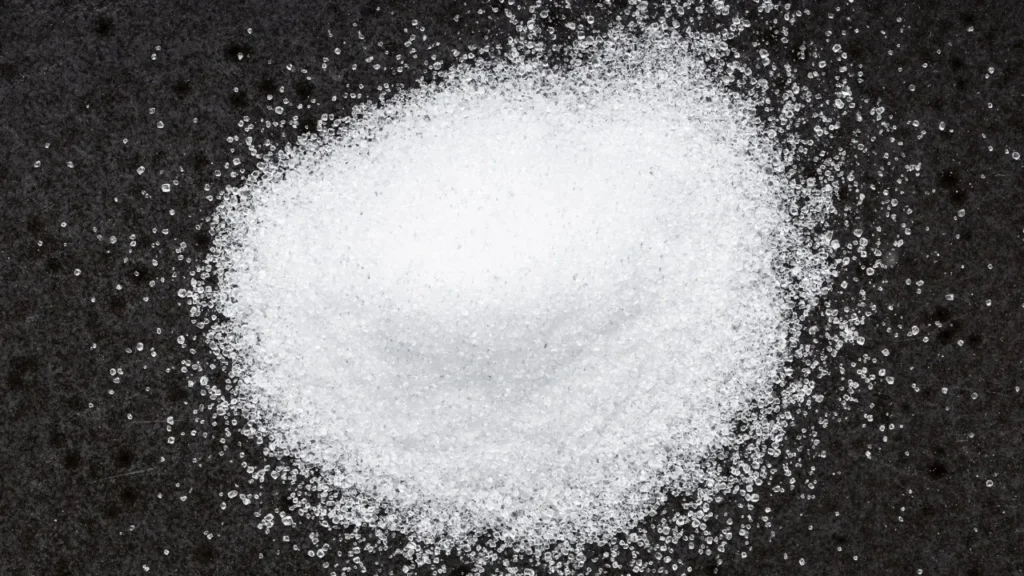The nutritional supplement Anhydrous Crystalline Maltose (ACM) has recently attracted interest because of its potential health advantages. This particular form of sugar is made up of two glucose molecules connected by an alpha-1,4 bond. Compared to conventional table sugar, which is made up of glucose and fructose, ACM is distinct. The purpose of this article is to examine the nature of ACM, as well as any potential health advantages, ideal dosage, adverse effects, possible drug interactions, and appropriate usage.
You May Also Like:
Five Great Reasons to Try a Nootropic Mushroom Supplement
What Are the Best Mushrooms for Brain Health? Here Are the Facts.
ANHYDROUS CRYSTALLINE MALTOSE: Benefits, Dosage, Side Effects, Drug Interactions, And Other Important Information is an original (NootropicsPlanet) article.
Nature of Anhydrous Crystalline Maltose
ACM is a crystalline powder that is white, odorless, and water soluble. Starch, a type of complex carbohydrate found in plants, is hydrolyzed to create it. Because ACM is an anhydrous version of maltose, it is devoid of water molecules. There are no other sugars or contaminants in this pure form of maltose.
Health Benefits of Anhydrous Crystalline Maltose
ACM has been formally investigated for its potential to improve health, including its impact on blood glucose regulation, cognitive function, and physical performance. ACM may enhance athletic performance by offering a rapid source of energy during exercise, according to research. In one study, ACM supplementation enhanced endurance performance in trained cyclists when compared to a control group.
For people with diabetes, ACM may help manage blood sugar levels. It is a kind of carbohydrate that the body absorbs fast, causing blood glucose levels to rise swiftly. ACM is made entirely of glucose, as opposed to table sugar, which also contains fructose. As a result, when consumed, there is no increase in blood fructose levels, which could be beneficial for individuals with diabetes.
ACM might also be advantageous for cognitive function. The main source of energy for the brain is glucose, and ACM is a type of glucose. Consuming glucose, according to studies, may enhance memory and cognitive performance.

Chemistry of Anhydrous Crystalline Maltose
ACM is a disaccharide. It’s made up of two glucose molecules connected by an alpha-1,4 bond. ACM has the chemical formula C12H22O11 and a molecular weight of 342.3 g/mol.
ACM production is a result of the hydrolysis of starch, a complex carbohydrate found in plants. Glucose molecules make up starch, while alpha-1,4 and alpha-1,6 bonds hold them together. These bonds are destroyed during hydrolysis, which produces shorter glucose chains, including maltose.
White, crystalline ACM powder dissolves in water. It is frequently used as a food addition and nutritional supplement, and it has a pleasant flavor.
ACM has special qualities that set it apart from other sugars due to its molecular structure. ACM has a linear structure due to the alpha-1,4 link, which has an impact on its solubility and digestion. In comparison to other varieties, ACM is easier for the body to digest due to its linear form, which also makes it simple to dissolve in water.
Physiological Mechanisms of Action
ACM’s main mode of action is its glucose concentration. The body’s main energy source is glucose, and ingesting ACM gives the body a rapid source of energy it can use for activity or daily tasks. Athletic performance and endurance may be enhanced by the body’s quick absorption and utilization of ACM.
Additionally, the glucose content of ACM might influence blood glucose regulation. Consuming ACM causes blood glucose levels to rise quickly, which can encourage the pancreas to release insulin. Glucose can either be used for energy or stored for later use in the cells where it is transported from the bloodstream by insulin. For those who have diabetes, this method may be helpful because it can control blood glucose levels.
The amount of glucose in ACM might also affect how well the brain works. Studies indicate that ingesting glucose may enhance memory and cognitive performance because glucose is the brain’s main energy source. Due to its glucose content, ACM might have comparable cognitive advantages, while additional research is required to completely understand the mechanism of action.
In general, ACM’s main physiological mechanism of action is its glucose content, which offers the body a rapid source of energy for usage during physical activity or daily tasks. Furthermore, both blood glucose control and cognitive function may be impacted.

Optimal Dosage of Anhydrous Crystalline Maltose
The aims and needs of the individual determine the best ACM dosage. Research studies have employed daily doses of 50 to 100 g administered to participants before or during exercise to improve athletic performance. Doses of 50 to 75 g per day have been used to manage blood sugar levels. Remember that the ideal dosage may change depending on your body weight, level of exercise, and other factors.
Side Effects of Anhydrous Crystalline Maltose
In moderation, ACM is generally safe to consume. Large doses of ACM, however, may result in gastrointestinal distress such bloating, gas, and diarrhea. This is due to the possibility that the body may not be able to quickly digest and absorb high amounts of ACM. Moreover, ingesting a lot of ACM may cause blood glucose levels to rise quickly, which could be dangerous for people who have diabetes.

Potential Substance Interactions with Anhydrous Crystalline Maltose
ACM may interact with other substances, including as prescription drugs and dietary supplements. For instance, taking ACM together with drugs that lower blood sugar, like insulin or metformin, can result in hypoglycemia (low blood sugar levels). If ingesting ACM, people taking these drugs need to regularly monitor their blood glucose levels.
Alpha-lipoic acid and chromium are two additional supplements that may interact with ACM and have an impact on blood glucose levels. Combining these supplements with ACM can cause a sharp rise in blood sugar levels, which could be dangerous for people with diabetes.
Responsible Uses of Anhydrous Crystalline Maltose
ACM ought to be utilized sensibly and sparingly. Before taking ACM or any other dietary supplement, those with diabetes or other medical issues should speak with their doctors. Stick to the dosage guidelines and refrain from ingesting excessive amounts of ACM.
ANHYDROUS CRYSTALLINE MALTOSE:
Conclusion
Anhydrous Crystalline Maltose is a unique type of sugar. It can be a safer sugar compared to table sugar for those with diabetes. It’s also water-soluble and easily absorbed by the body for worry-free consumption. In recent studies, there is promising evidence that ACM consumption is beneficial to athletic performance and cognitive ability. There is still much to study and learn about ACM, and hopefully, this article contributed to your growing knowledge on this substance with a unique chemical make-up and molecular structure.

References:
- “Anhydrous Crystalline Maltose.” Retrieved from: https://www.rxlist.com/supplements/anhydrous_crystalline_maltose.htm
- ISSN Exercise & Sports Nutrition Review Update: Research & Recommendations. Retrieved from https://jissn.biomedcentral.com/articles/10.1186/s12970-018-0242-y
- Maltodextrin: What Is It and Is It Safe? Retrieved from https://www.healthline.com/nutrition/maltodextrin
Important Note: The information contained in this article is for general informational purposes only, and should not be construed as health or medical advice, nor is it intended to diagnose, prevent, treat, or cure any disease or health condition. Before embarking on any diet, fitness regimen, or program of nutritional supplementation, it is advisable to consult your healthcare professional in order to determine its safety and probable efficacy in terms of your individual state of health.
Regarding Nutritional Supplements Or Other Non-Prescription Health Products: If any nutritional supplements or other non-prescription health products are mentioned in the foregoing article, any claims or statements made about them have not been evaluated by the U.S. Food and Drug Administration, and such nutritional supplements or other health products are not intended to diagnose, treat, cure, or prevent any disease.


